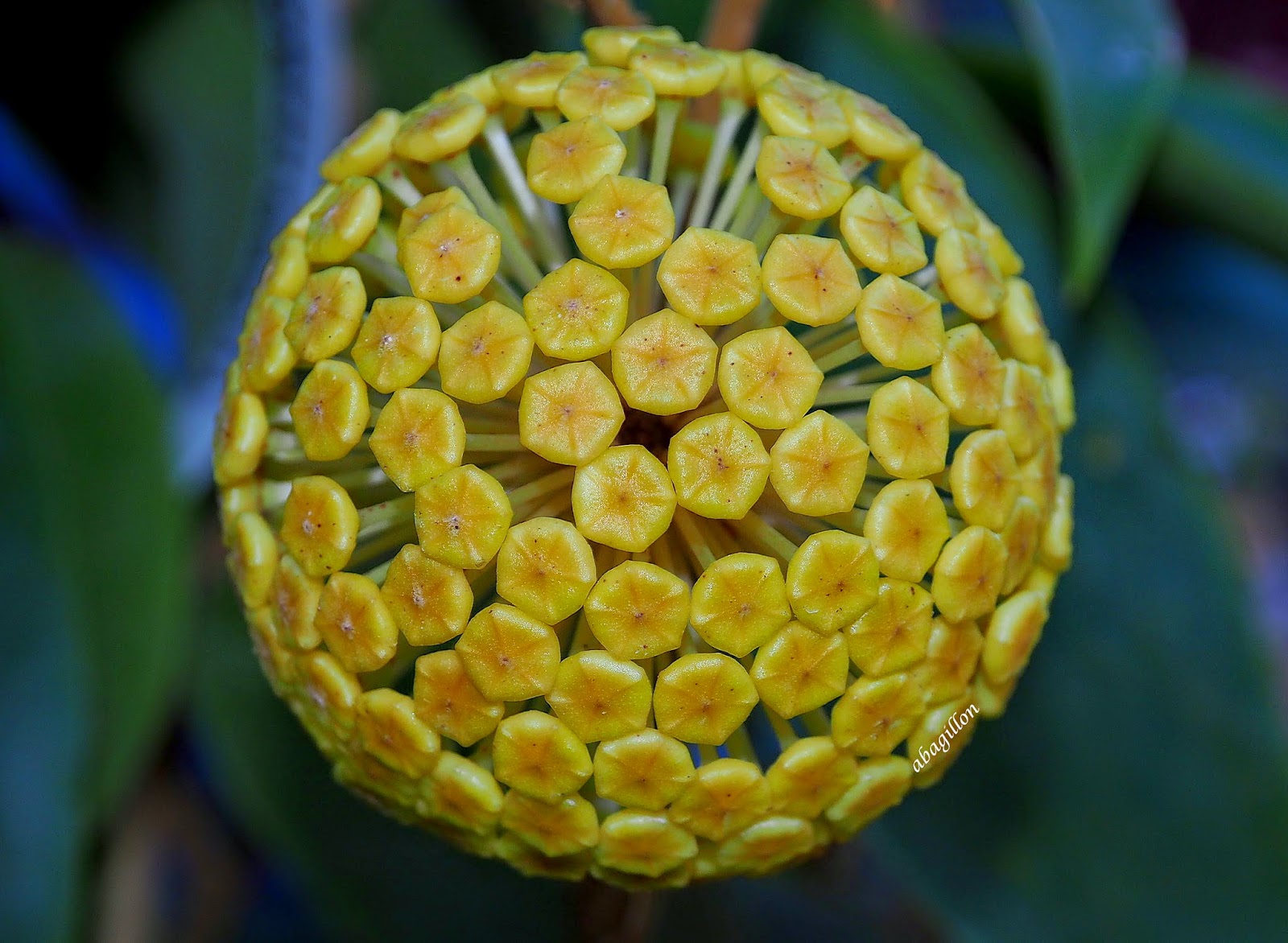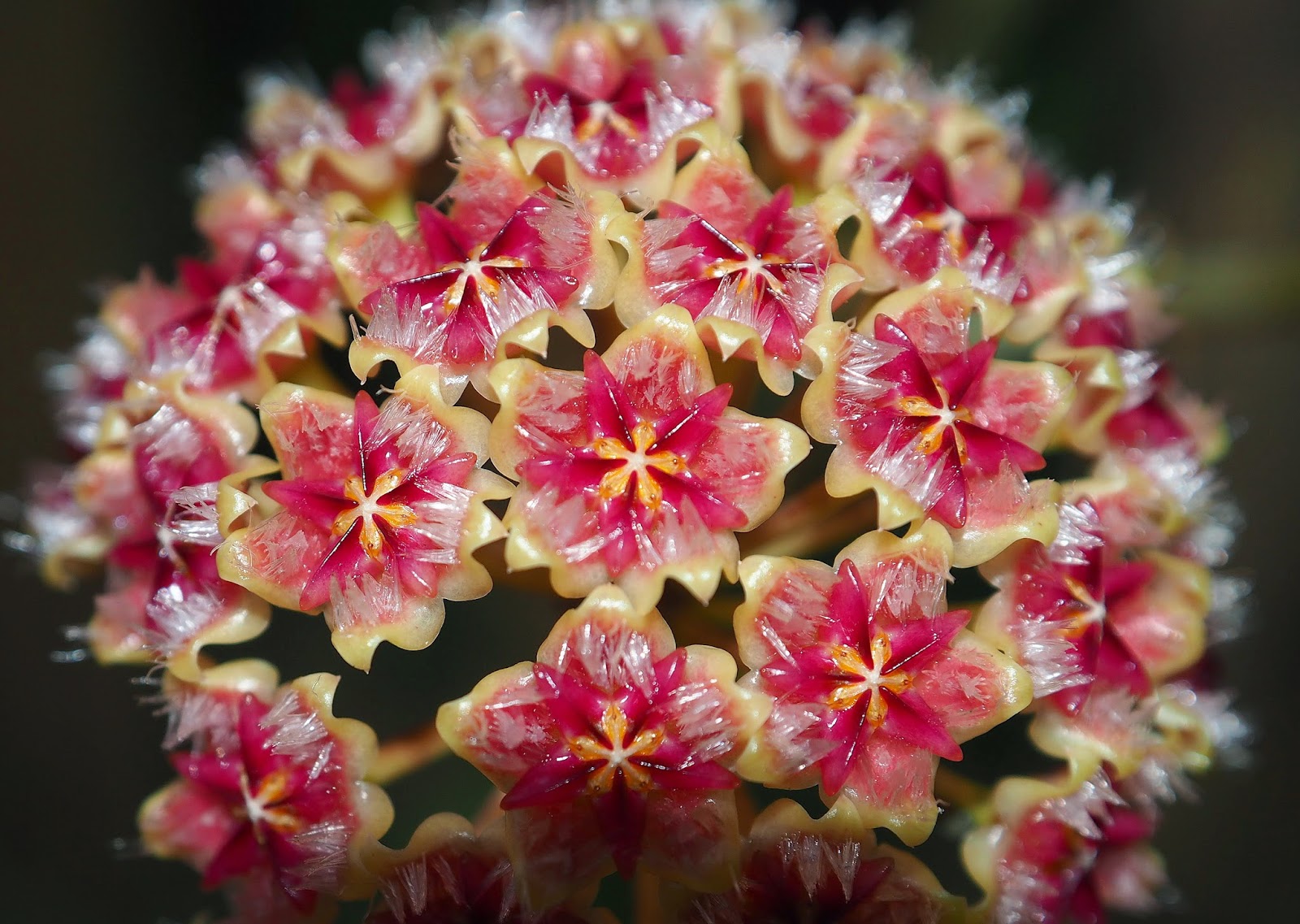Some of you might not be appreciative of my post today! This might be too biased for my addiction at the moment. In the previous years they are mostly orchids, so please bear with me, hoyas are my current pre-occupation. They are the flowers that currently rule my consciousness. I am asking forgiveness from you, but at the same time hoping that some of you might get contaminated with this hobby. It has only been with me in the last 3-4 years, and it really is contagious. The nice part of it is that it is grown worldwide, despite its endemicity in the tropical climates like ours. The sad part is that, virulence emanated from the collectors residing in temperate climates. And we here in countries where they came from cannot sometimes get the species here because they are already not available, either lost from the wild or already in the nurseries of collectors. And the saddest part of all is that the price has gone up in the world market and our capacity to pay is not enough to get samples from these collectors with the shipping cost. We intently want to have samples be back to the country.
You might misunderstood me, but inavailability in the wild is not solely due to collectors, but also because of unjudicious deforestation. Moreover, these plants are not known in the past so they just slash and burn the wild to open for agriculture. These are sad truths, and we can just salvage whatever we can at the end of the storm.
Hoya crassicaulis, in bloom (above) and at bud stage (below)
Hoya camphorifolia or bifunda i am not sure yet
Hoya naming has been so controversial recently, and there are some inconsistencies and doubling of names to otherwise the same species. Lack of thorough research on these plants predispose them to these controversies. It will only be DNA methodologies which will later give light to the chaos in their identities.
Hoya obscura
Hoya mindorensis
Above form is when it just opened the corolla, the photo below is the same flower a day after when the corolla already reflexed or turned backwards.
Hoya mindorensis
Above is another color form of
Hoya mindorensis. There are at least 12 forms reported here already.
Hoya ilagiorum
This is also immediately after flower opening. Those corollas eventually reflex too.
Hoya lucardenasiana
Its blooming has a story. It hasn't been growing nicely and looks retarded. After 2 years i eventually changed and cleaned the roots in January. To hasten recovery from stress i enclosed it in Polyethylene Bag to conserve transpiration. Then after 1 month we just saw that aside from growing lots of roots it also bloomed inside the bag. Oh i learned that it needs a lot of surrounding humidity. Another trivia is that it is named from a batchmate in college Lou Cardenas. Isn't if funny!
Hoya imperialis
Another species which challenge my patience is this Hoya imperialis. Its first time blooming was in December when i was out of the country. Then it buds again, but it has been already 2 months, already very big and yet doesn't show any crack yet. I am going home every weekend, no matter how tiring just because it might suddenly decide to open, of course i have to document it with pictures. My sister said that during the first time there are already cracks but they didn't open fully yet, so she got impatient also and tried helping it by hand! Hilarious don't you think?
Hoya pubicalyx
Hoya pubicalyx is one of the most beautiful of the hoyas. It also produced lovely round umbels and stays on the plant for at least a week. When plenty of umbels are simultaneously blooming in one plant, it really is very attractive. Some people find the scent as nice, but i prefer the other species. It also has some color forms; pink, red, white, purple, variegated and black.
Please bear with the bad quality of the photo, but i took it with tablet. My camera batteries were not charged last week and i forgot the charger in the city, what a shame! It also has another open umbel at the far right side, and 3 more are following. Do you visualize the total picture, and my delight looking at them? I hope you do, and i hope also i contaminated you with enthusiasm of owning at least a few of the hoyas. The Philippines has at least about 200 of its endemic species. Other countries have theirs too, like Malaysia, Indonesia, Thailand and Papua New Guinea.
Come on Garden Bloggers, lets try hoya in our gardens!
http://www.floralfridayfoto.blogspot.com/2015/03/fff174-blue-lotus.html





















